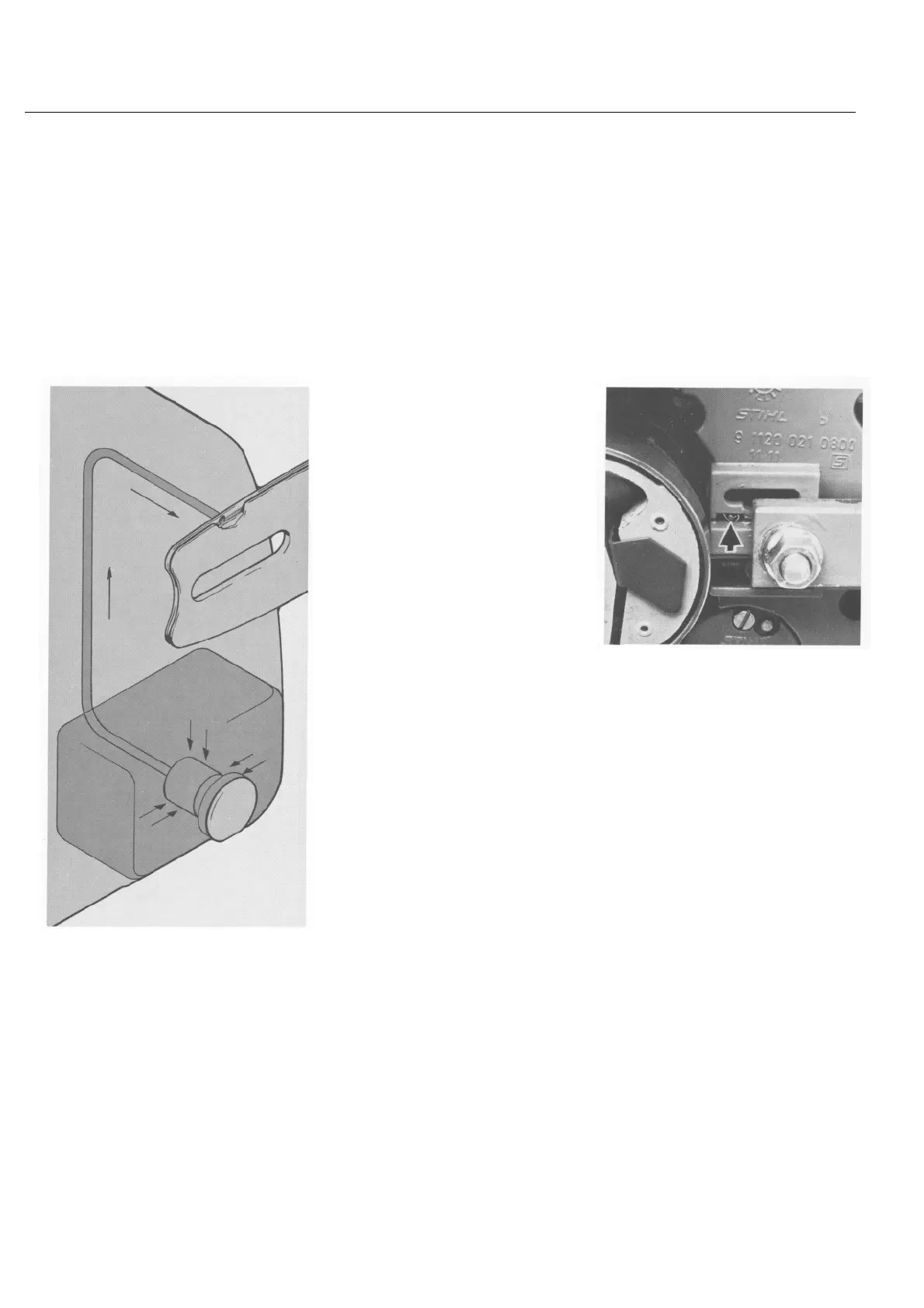STIHL 009, 010, 011 41
7.
an
an
ent 7.
otes on
epa
Chain oil supply system
Split pin in vent hole
sure in the oil tank. This is necessary
because the pump would not
otherwise operate, i. e. the airtight
seal provided by the oil filler cap
would cause a vacuum to be created
in the oil tank as the oil level drops
and thus negate the suction of the oil
pump.
There is a vent hole in the crankcase
below the chain oil outlet to insure
that equal pressures are maintained
inside and outside the oil tank. A split
pin is fitted in the vent hole which
allows air to enter but also prevents
the ingress of dirt and the loss of
chain oil from the tank.
If the vent hole is caked with dirt, it
can blown be out with compressed
air. Stubborn particles of dirt can be
loosened by turning the split pin
carefully to and fro and then blown
out with compressed air.
If the two halves of the crankcase are
separated during a repair, the pulse
hole in the sprocket side of the
crankcase should be examined for
deposits of foreign matter. If any are
found, they should be cleaned away
with the pump housing removed.
If the machine has not been in use for
an extended period, the pump plunger
may be stuck in the pump housing
owing to resin in the oil. In such a
case the pump must be disassembled
and washed in clean gasoline.
The chain oil tank is an integral part of
the crankcase. The oil pump - which
is operated by the alternating
pressures in the crankcase - draws
chain oil through a filter and into the
pump housing. It then feeds it through
a rubber hose to the oil inlet hole in
the guide bar.
A precondition for correct operation of
the oil pump is that the pressure in
the pump housing during the intake
stroke must be lower than the pres
